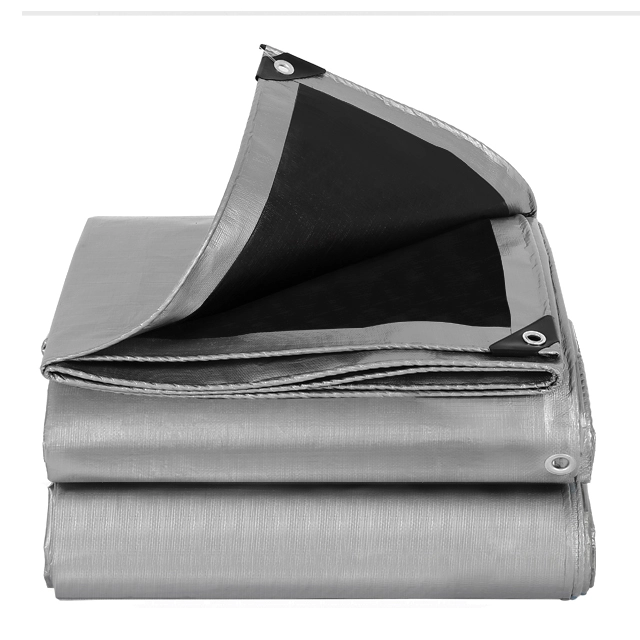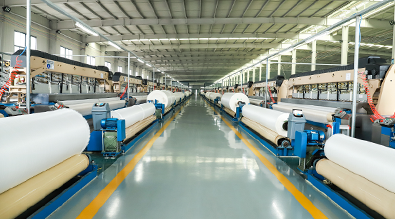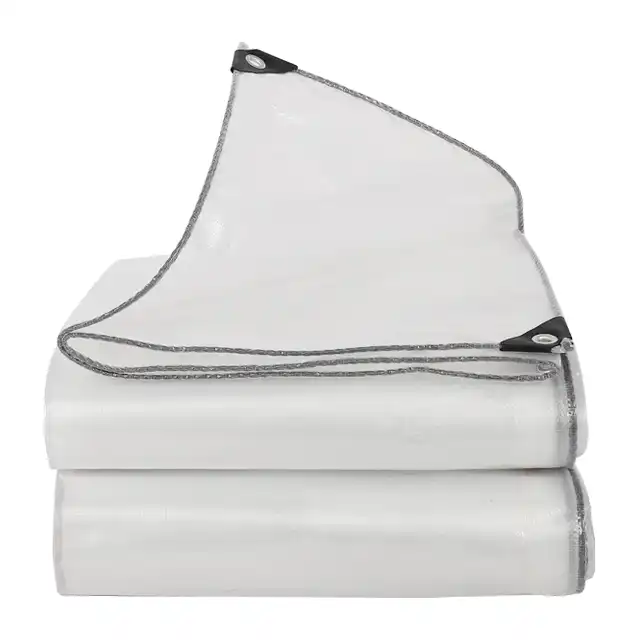How to Use Tarpaulin as Temporary Roofing After a Storm?
When severe weather strikes and damages your roof, quick action is essential to prevent further water damage to your home. Using a roofing tarpaulin as a temporary protective measure is one of the most effective immediate solutions available to homeowners facing storm-related roof damage. This comprehensive guide will walk you through the proper techniques, safety considerations, and material requirements for successfully implementing temporary roof protection using high-quality tarpaulin materials. After a storm passes, properly installed roofing tarpaulin can provide crucial protection until permanent repairs can be completed. The key to successful temporary roofing lies in understanding the right materials to use, following proper installation procedures, and maintaining safety throughout the process. Professional-grade PE tarpaulins, particularly those with heavy-duty construction and superior waterproofing capabilities, offer the best protection against continued water infiltration and weather exposure.
Essential Preparation and Safety Measures for Storm-Damaged Roofs

Assessing Roof Damage and Weather Conditions
Before attempting any roofing tarpaulin installation, conducting a thorough damage assessment is critical for both safety and effectiveness. Document all damaged areas with photographs from both interior and exterior perspectives for insurance purposes. This documentation process not only assists with insurance claims but also helps determine the appropriate size and type of roofing tarpaulin needed for adequate coverage. Professional-grade PE tarpaulins with weights ranging from 85gsm to 280gsm provide varying levels of protection depending on the severity of damage and expected weather conditions. When evaluating your roofing situation, look for obvious signs of damage including missing shingles, exposed underlayment, damaged flashing, or visible holes in the roof structure. The extent of damage will determine whether a single large roofing tarpaulin or multiple smaller sections will be required. High-quality PE tarpaulins manufactured with HDPE woven fabric and LDPE coating offer superior durability and weather resistance, making them ideal for extended temporary roofing applications. These materials typically feature mesh counts ranging from 10x10 to 18x18, providing excellent strength-to-weight ratios for emergency roofing situations.
Safety Equipment and Weather Considerations
Never attempt to install roofing tarpaulin during active storms, high winds, or wet conditions. Safety should always be the primary concern when working on any roof, particularly one that has already sustained storm damage. Essential safety equipment includes non-slip footwear with good grip, safety harnesses for steep or high roofs, protective gloves, safety goggles, and weather-appropriate clothing. The surface of damaged roofing can be particularly treacherous, with loose materials, exposed nails, and slippery conditions creating additional hazards. Professional roofing tarpaulin materials designed for emergency applications often feature special characteristics that enhance safety during installation. UV-treated PE tarpaulins with protective coatings resist degradation from sun exposure, while tear-resistant construction helps prevent accidental tearing during installation. Quality manufacturers like Linyi Shengde Plastic Co., Ltd. produce roofing tarpaulin materials with enhanced grip surfaces and reinforced edges specifically designed for emergency roofing applications, providing both installer safety and superior weather protection.
Gathering Necessary Tools and Materials
Successful roofing tarpaulin installation requires proper tools and high-quality materials to ensure both immediate protection and longevity of the temporary repair. Essential tools include a heavy-duty staple gun or roofing nailer, galvanized nails or screws, wooden battens or furring strips, measuring tape, utility knife, and rope or bungee cords for securing. The roofing tarpaulin itself should be sized appropriately with at least four feet of overlap on all sides to prevent water infiltration at seams and edges. Premium PE tarpaulins suitable for roofing applications typically feature 100% waterproof construction, tear-resistant materials, and UV treatment ranging from 1% to 7% for extended outdoor durability. The thickness of roofing tarpaulin, measured in mils, should be appropriate for the expected duration of use and weather conditions. Heavy-duty options ranging from 20-24 mil thickness provide superior puncture resistance and longevity, making them ideal for emergency roofing situations that may require extended coverage periods before permanent repairs can be completed.
Proper Installation Techniques for Maximum Protection
Positioning and Measuring Your Roofing Tarpaulin
Correct positioning of roofing tarpaulin is crucial for preventing water infiltration and ensuring maximum protection of your damaged roof structure. The tarpaulin should completely cover the damaged area with approximately four feet of overlap on all sides to prevent water from seeping under edges and into seams. Begin by carefully measuring the damaged area, adding the required overlap dimensions to determine the total tarpaulin size needed. Professional-grade PE tarpaulins are available in custom sizes upon request, allowing for precise fitting to specific damage patterns and roof configurations. When positioning the roofing tarpaulin, ensure that the material extends well beyond the damage zone and overlaps onto undamaged roof sections. This extended coverage creates multiple barriers against water infiltration and accounts for potential wind uplift that might compromise smaller coverage areas. Quality PE tarpaulin materials with mesh counts of 14x14 or higher provide excellent dimensional stability, reducing the likelihood of stretching or distortion during installation and use. The positioning should also consider the natural flow of water across the roof surface, ensuring that the tarpaulin channels water away from vulnerable areas rather than creating new pooling zones.
Securing Methods and Attachment Techniques
Proper attachment of roofing tarpaulin requires techniques that balance secure fastening with minimal additional damage to the existing roof structure. Traditional methods involve using galvanized nails or screws driven through wooden battens placed along the edges of the tarpaulin, creating even pressure distribution and reducing the likelihood of tearing. This sandwiching technique is particularly effective with heavy-duty PE tarpaulins that feature reinforced edges and high tear strength ratings. Alternative attachment methods include using specialized roofing adhesives for temporary applications, weighted systems that avoid penetrating the roof surface, and rope or strap systems that anchor to secure points around the roof perimeter. The choice of attachment method depends on the roof material, extent of damage, and expected duration of the temporary repair. Professional-grade roofing tarpaulin materials often include reinforced grommets or attachment points specifically designed for secure fastening without compromising the waterproof integrity of the material. These engineered attachment solutions provide superior holding power while maintaining the flexibility needed for thermal expansion and contraction.
Managing Water Flow and Drainage
Effective water management is essential for successful temporary roofing installations using tarpaulin materials. The installation must not only prevent water from entering the damaged area but also ensure proper drainage to prevent pooling, ice formation, or structural stress from accumulated water weight. Proper slope and tension in the roofing tarpaulin help direct water flow toward existing gutters and drainage systems rather than creating new problem areas. When installing roofing tarpaulin over large damaged areas, consider creating controlled drainage points that channel water safely away from the structure. This might involve strategic placement of the tarpaulin to create gentle slopes toward gutters or safe ground areas. High-quality PE tarpaulin materials with superior waterproof ratings maintain their protective properties even when subjected to standing water or ice formation, but proper drainage reduces stress on both the temporary covering and the underlying roof structure. Professional installation techniques often incorporate temporary drainage channels or diverters to manage water flow effectively during extended coverage periods.
Long-Term Maintenance and Professional Considerations
Monitoring and Maintenance Requirements
Once roofing tarpaulin is properly installed, regular monitoring and maintenance become essential for continued protection and safety. Temporary tarpaulin installations should not remain in place for extended periods, and professional repairs should be completed as soon as possible. Weekly inspections should focus on checking attachment points, looking for signs of wear or damage, and ensuring that the tarpaulin remains properly positioned and tensioned. During maintenance inspections, pay particular attention to areas where the roofing tarpaulin contacts sharp edges, corners, or protruding elements that might cause gradual wear or sudden tearing. Quality PE tarpaulin materials with high tear strength and puncture resistance ratings provide better longevity, but all temporary installations require ongoing attention. Weather events following the initial installation can shift or damage even well-secured tarpaulins, making regular inspection critical for maintaining protection. Professional-grade materials with UV treatment and weather-resistant coatings maintain their integrity longer, reducing the frequency of replacement or adjustment needed.
When to Seek Professional Assistance?
While emergency roofing tarpaulin installation can often be accomplished by capable homeowners, certain situations require professional expertise for both safety and effectiveness. Complex roof designs, steep slopes, extensive damage areas, or multi-story structures present significant risks that may exceed the capabilities of typical homeowners. Professional roofers have specialized equipment, training, and experience that enable safe and effective temporary repairs in challenging conditions. Professional installation also ensures compliance with local building codes and insurance requirements that may affect coverage for both the temporary repair and subsequent permanent work. Experienced contractors understand the nuances of different roofing materials and can select appropriate tarpaulin specifications for specific applications. They also have access to commercial-grade PE tarpaulin materials that may not be readily available to consumers, including extra-heavy-duty options with weights exceeding 280gsm and specialized features like enhanced UV protection or fire-resistant treatments.
Planning for Permanent Repairs
Effective temporary roofing tarpaulin installation should be part of a comprehensive plan that includes scheduling and preparing for permanent repairs. The temporary protection provided by quality tarpaulin materials creates a window of opportunity for thorough damage assessment, insurance processing, contractor selection, and material procurement for permanent repairs. However, this window should be utilized efficiently to minimize the duration of temporary coverage and associated risks. During the temporary protection period, work with qualified contractors to develop detailed repair plans that address not only the obvious damage but also any underlying issues that may have contributed to the storm damage. Professional-grade roofing tarpaulin materials provide reliable protection that allows for careful planning rather than rushed repair decisions. The quality and durability of temporary protection directly influence the time available for proper permanent repair planning, making the selection of appropriate tarpaulin materials a critical decision that affects the entire recovery process.
Conclusion
Implementing effective temporary roofing solutions using professional-grade tarpaulin materials requires careful planning, proper materials, and attention to safety throughout the process. Quality PE tarpaulins with appropriate specifications provide essential protection that prevents further damage while allowing time for permanent repairs. The key to success lies in understanding proper installation techniques, selecting appropriate materials, and maintaining the installation until professional repairs can be completed. With proper execution, roofing tarpaulin installations serve as crucial bridges between storm damage and full recovery.
For reliable, high-quality roofing tarpaulin solutions, Linyi Shengde Plastic Co., Ltd. stands as a leading China Roofing Tarpaulin manufacturer with over two decades of industry expertise. As a trusted China Roofing Tarpaulin supplier and China Roofing Tarpaulin factory, we offer comprehensive China Roofing Tarpaulin wholesale solutions tailored to emergency roofing applications. Our Roofing Tarpaulin for sale includes premium materials with weights from 85gsm to 380gsm, ensuring optimal protection at competitive Roofing Tarpaulin prices. Experience the reliability of High Quality Roofing Tarpaulin backed by ISO 9001:2015 certification and partnerships with international organizations including UNHCR and UNICEF. Contact us at info@shengdetarp.com for expert consultation and customized solutions that meet your specific emergency roofing requirements.
References
1. "Emergency Roof Repair: Temporary Solutions for Storm Damage" - National Roofing Contractors Association Technical Manual, 2023
2. "Tarpaulin Materials and Applications in Construction" - Thompson, R.J., Journal of Building Materials and Construction Technology, Vol. 45, 2024
3. "Safety Guidelines for Emergency Roof Repairs" - Occupational Safety and Health Administration Construction Standards, Updated 2024
4. "Waterproof Membrane Systems for Temporary Building Protection" - International Building Code Commentary on Emergency Repairs, 2023 Edition




